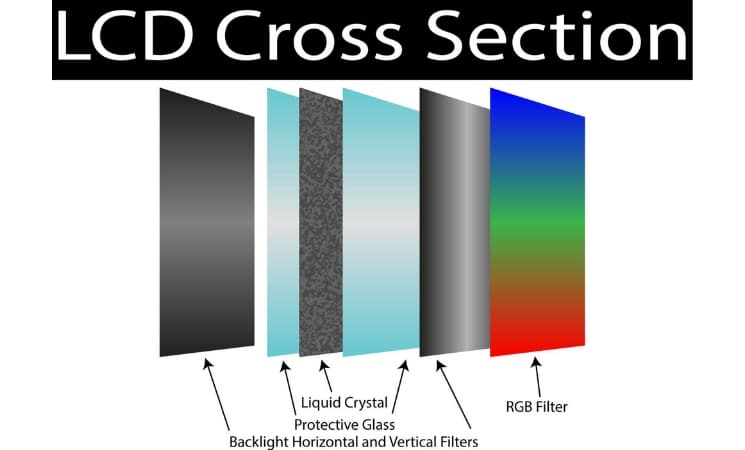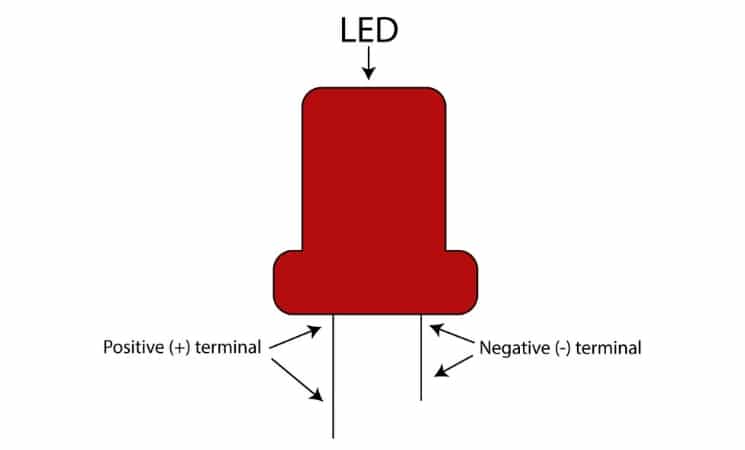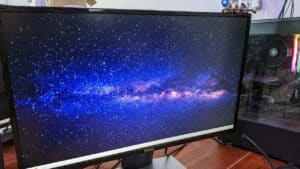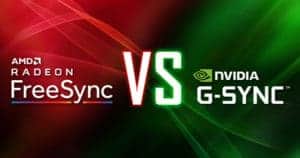LCD vs LED monitor – which one is better for gaming?
Explaining the key differences between LCD vs LED displays
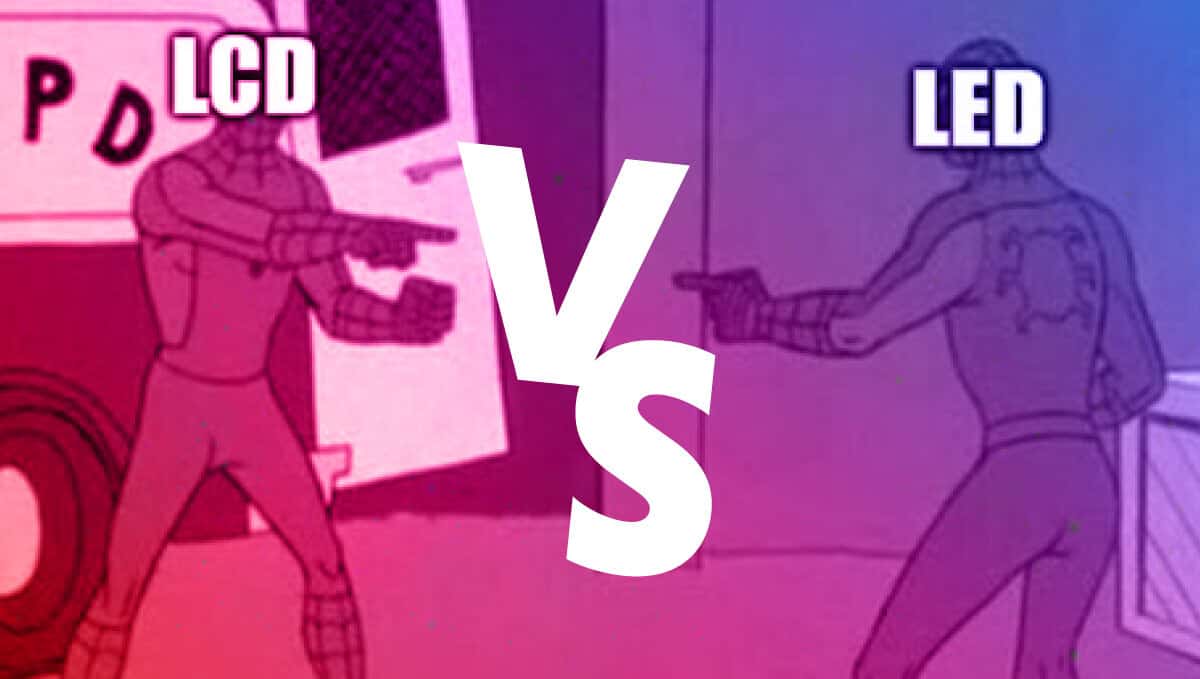
WePC is reader-supported. When you buy through links on our site, we may earn an affiliate commission. Prices subject to change. Learn more
While shopping for gaming monitors, you will often come across two display technologies – LED and LCD. Before we get into the deeper comparison, let’s understand the basic difference.
Now, it is important to note that LED is a backlighting technology, and LCD is a display technology. For instance, the newer LCD monitors can have an LED backlight. So technically, LCD and LED are not directly comparable. However, we can compare the backlighting technology that powers the displays as the way they illuminate their pixels separates these two technologies.
With the terminology and technicalities out of the way, in this article, we will be exploring what LCDs and LEDs are, how they work, what sets them apart, and what to expect when you go shopping for a gaming monitor.
How do LCD monitors work?
To start with, let’s understand what an LCD is. LCD is short for Liquid Crystal Display. And much like the term suggests, LCD monitors do have a layer of liquid crystals wedged between two polarizing filters. LCD monitors rely on LED or CCFC backlighting, liquid crystals, and polarizing filters to manipulate the light to generate visuals.
Compared to LED monitors, LCD monitors consume more power (the older LCDs with fluorescent tubes). Fluorescent tubes need more power to run, but their light emission is less than that of LEDs.
As mentioned earlier, LCD monitors at work involve backlight, liquid crystals, and polarizing filters blocking and manipulating light.
- Let’s start with the source of light, which, in this case, is a backlight (can be fluorescent or LED). This is where the LCD monitor would get its light from.
- Then, there are two polarizing filters that block light from passing through.
- Wedged between the two filters is the liquid crystal layer that manipulates the light passing through them. These are rod-shaped molecules that can change their orientation when an electric current passes through them. The crystals, by themselves, are not capable of generating light.
- When electric current flows through this system, the liquid crystals change their orientation, and varied intensity of light passes through.
- The power then charges up the pixels, which, in turn, form shapes and colors that you see on the screen. As the pixels are controlled by individual electrodes, the light control is quite precise.
For a better understanding, you can check out the diagram below –
| BOX – It is important to note that most LCD displays on the market today are powered by an LED backlight. |
How do LED monitors work?
LED is short for light-emitting diodes, which are small semiconductors often used as a backlight source for LCD panels. Now, most monitors that you see today will have LED backlighting, as this is a more energy-efficient way of powering up the displays than the old fluorescent tube backlights.
Further, LEDs tend to generate brighter lights, deliver consistent brightness, and better color accuracy. Plus, as LEDs are compact, they help in manufacturing thinner monitors.
Interestingly, LED monitors work very similarly to LCD monitors. LED monitors also use the LCD panel and rely on an LED panel for light. The array of LEDs then powers up the LED monitors, which is more power-efficient than fluorescent tubes.
To put it simply, the basic working of an LED monitor is similar to that of the LCD monitor described in the previous section. The only difference is in the output – LED monitors have a more energy-efficient operation and deliver brighter and more vibrant images.
With that being said, if you browse through the options available on the market, you will come across two major formats – edge-lit and full-array local dimming. It refers to how the LED illuminates certain portions of its backlight, affecting the contrast ratio of dark scenes and HDR.
Edge-lit
Edge-lit local dimming is a feature that sees two rows of LEDs on opposing sides of the displays (usually each vertical side of the display) used for the entire illumination of a panel. With this form of local dimming, the display only has limited control over the portions of the backlight that can be dimmed at any one time.
When viewing content with extreme contrast, edge-lit displays often fall victim to blooming, haloing, and banding – three artifacts that reduce image quality exponentially.
FALD
By contrast, FALD displays utilize thousands of LEDs all over the screen – enabling them to have much better control over the illumination of the pixels. While edge-lit displays can only alter the luminance of the edges, FALD displays have the ability to alter thousands of unique zones, reducing blooming, haloing, and banding. For reference, you can check out the best HDR monitors that come with a FALD.
LCD vs LED – What’s the difference?
Before we get into the nitty-gritty details, let’s look at how LCD and LED are different quickly –
| Attribute | LED | LCD |
| Backlight technology | LED array | Fluorescent tubes |
| Picture quality | High | Low |
| Energy efficiency | Good | Decent |
With that basic comparison out of the way, let’s understand how LED backlighting and fluorescent tubes (CCFL backlighting used in older LCDs) are different.
LED Backlighting (Light-emitting diode)
Most monitors and TVs today have LED backlighting, which is power-efficient as well as delivers better picture quality than LCDs.
Using an LED to light LCD displays was a great move. LEDs are much less expensive to produce nowadays, require much less energy, and can be made in a variety of shapes and sizes. LEDs also have a much longer lifespan than fluorescent, with most rated over 100,000+ hours, while CCFL lights are rated at 20,000-40,000 hours.
Backlighting LCD screens using LEDs gave manufacturers much more control over how each individual pixel acts. This gives us a better color range, faster response times, and a greater range of available contrast.
For instance, you can get white LEDs in a vast range of warm and cool whites, single colors, and full RGB multicolors. Displays with a bright white LED will also have the ability to generate greater luminance levels as well. An RGB LED backlit monitor, on the other hand, will feature benefits such as a wider color gamut and more vivid tones.
LCD Backlighting (CCFL)
When using the older CCFL method to illuminate the pixels, long rows of CCFL tubes are positioned behind the screen itself – creating a more ambient method to light up the pixels.
This is an inefficient way of illuminating pixels – with the CCFL backlight permanently illuminated when the monitor is being used. As you can guess, this is not very energy efficient.
Not only are the tubes bulky, but running rows of them behind the pixels requires much more room than rows of LEDs. This makes the monitor larger and bulkier than its LED-backlit counterpart – bear with me as I remember the old-school CRT monitors that were as wide as they were deep.
Also, unlike other backlight technologies, you can’t individually switch off specific areas of the CCFL backlight – meaning there’s a large possibility for backlight bleed and haloing in areas that are supposed to be dark or black.
Frequently Asked Questions
Is LCD or LED better for eyes?
If we’re talking about two monitors of the exact same dimensions, one LED and one LCD, LED is typically understood to be the more eye-friendly choice. For the most part, this is because you can dim an LED screen without sacrificing image quality.
Which lasts longer LCD or LED?
Generally, LCD displays are believed to have a life span of 50,000 hours, which is nearly half of LED displays’ lifespan.
Conclusion
As mentioned earlier, LED monitors (powered by LED backlighting) are widely available on the market today – thanks to their power efficiency and compactness. For your gaming setup, you will find a wide variety of monitors with varying resolutions, high refresh rates, and other gaming-oriented features within your budget. While LED monitors tend to be slightly more expensive, the power efficiency will offset that additional cost in the long run.

